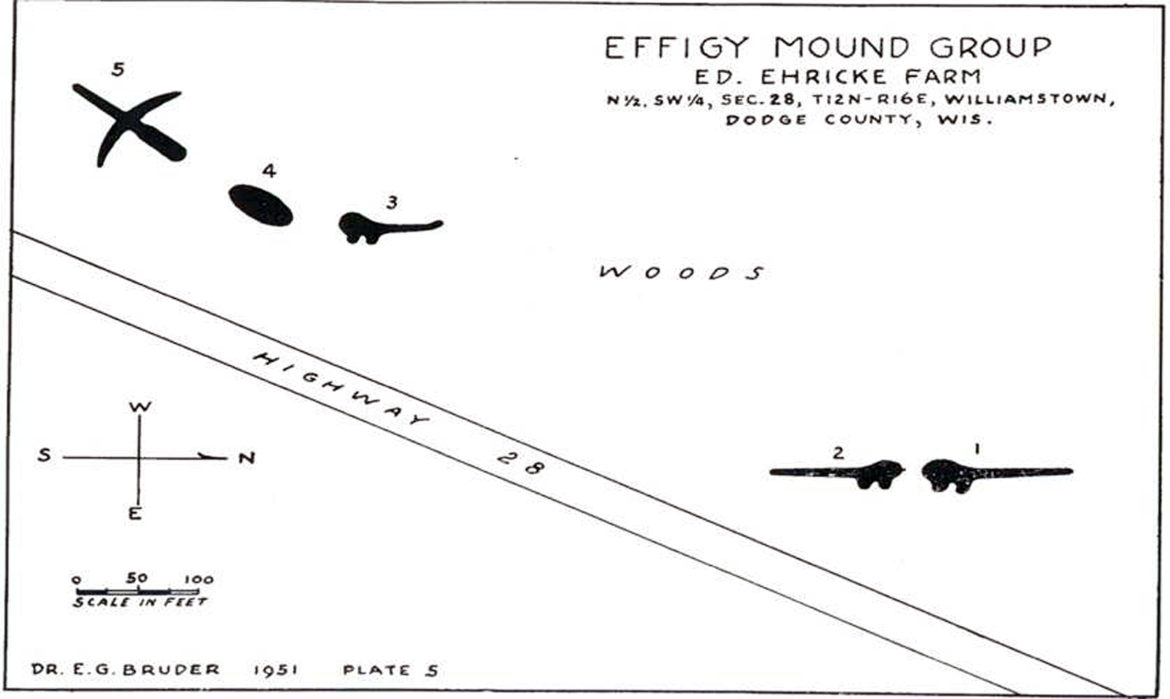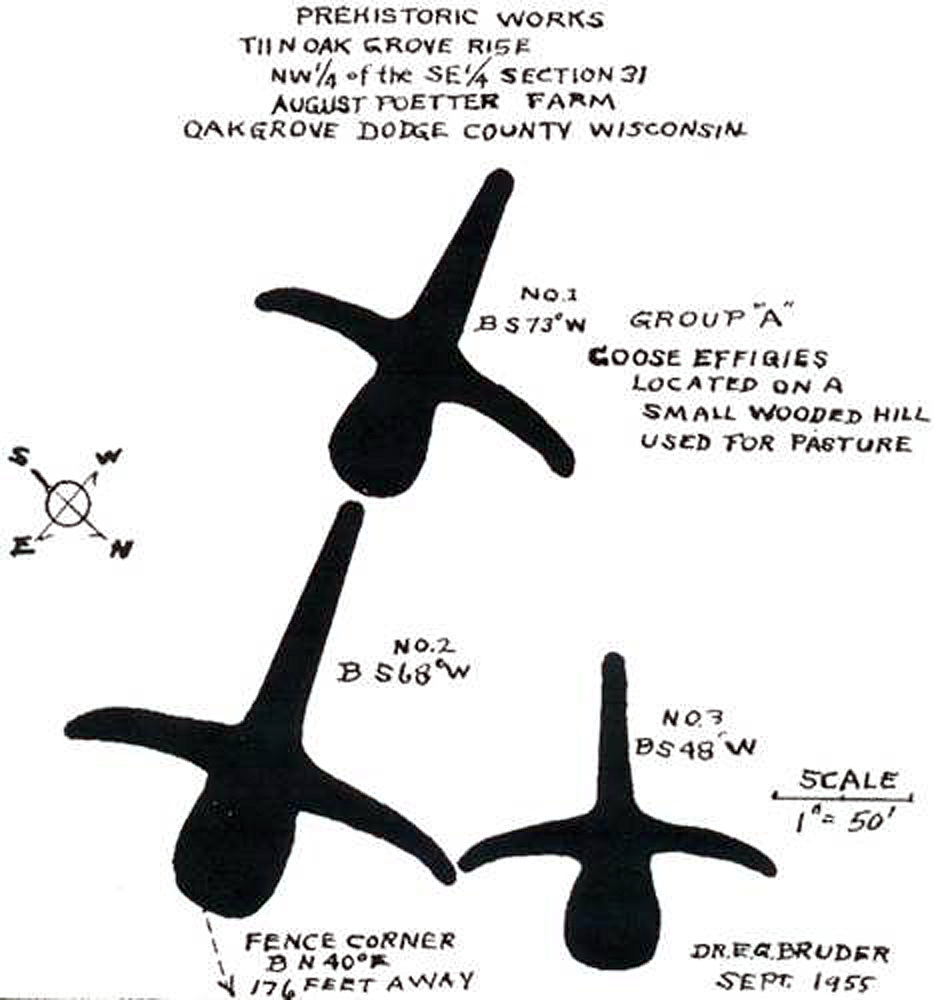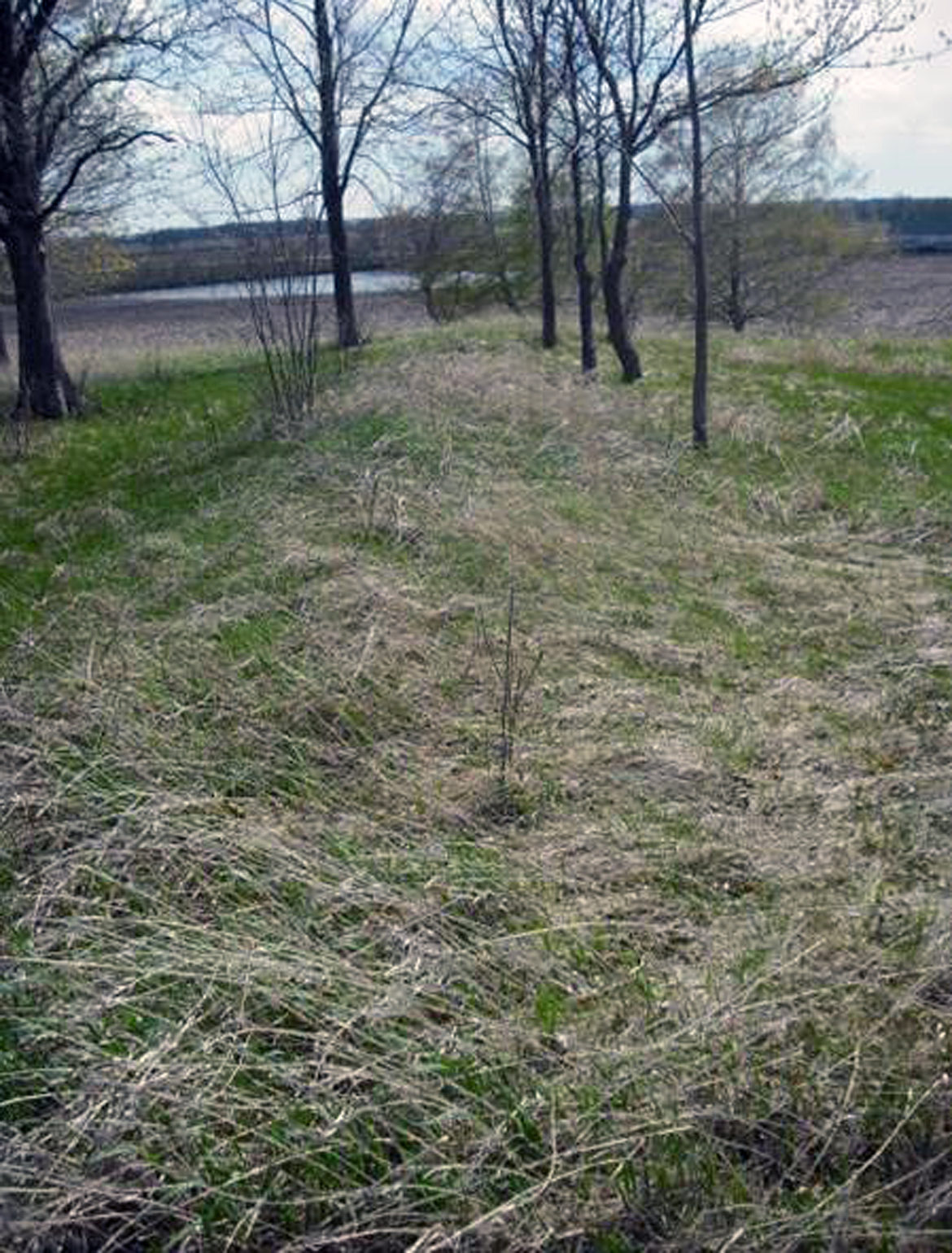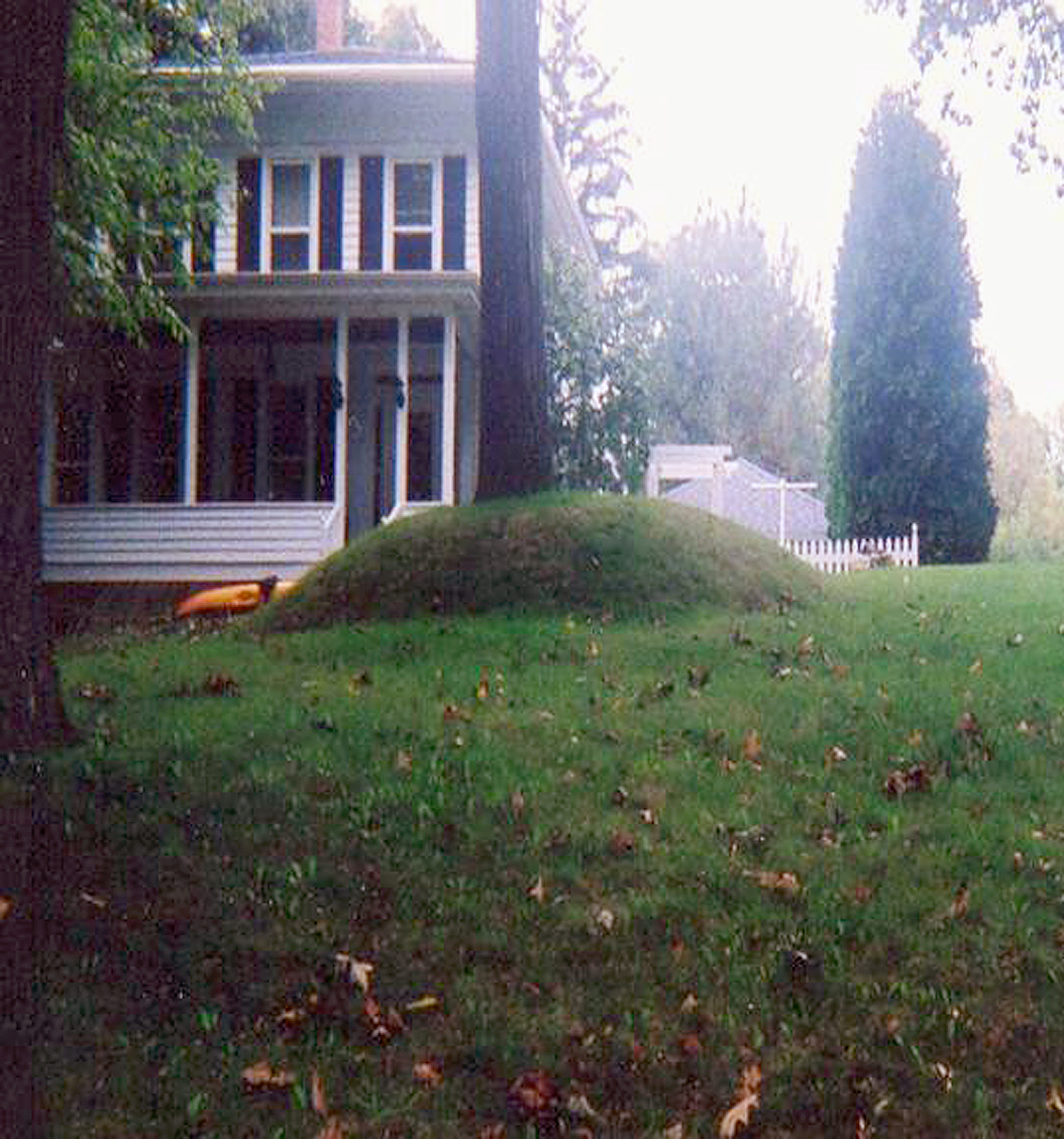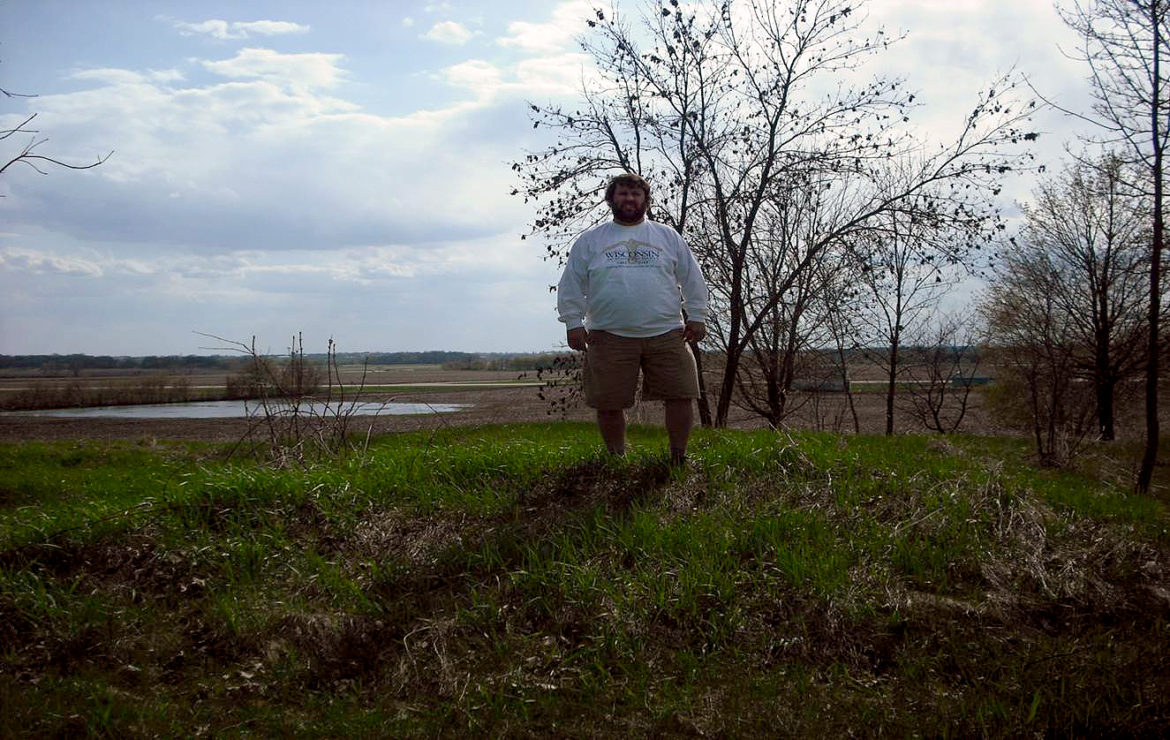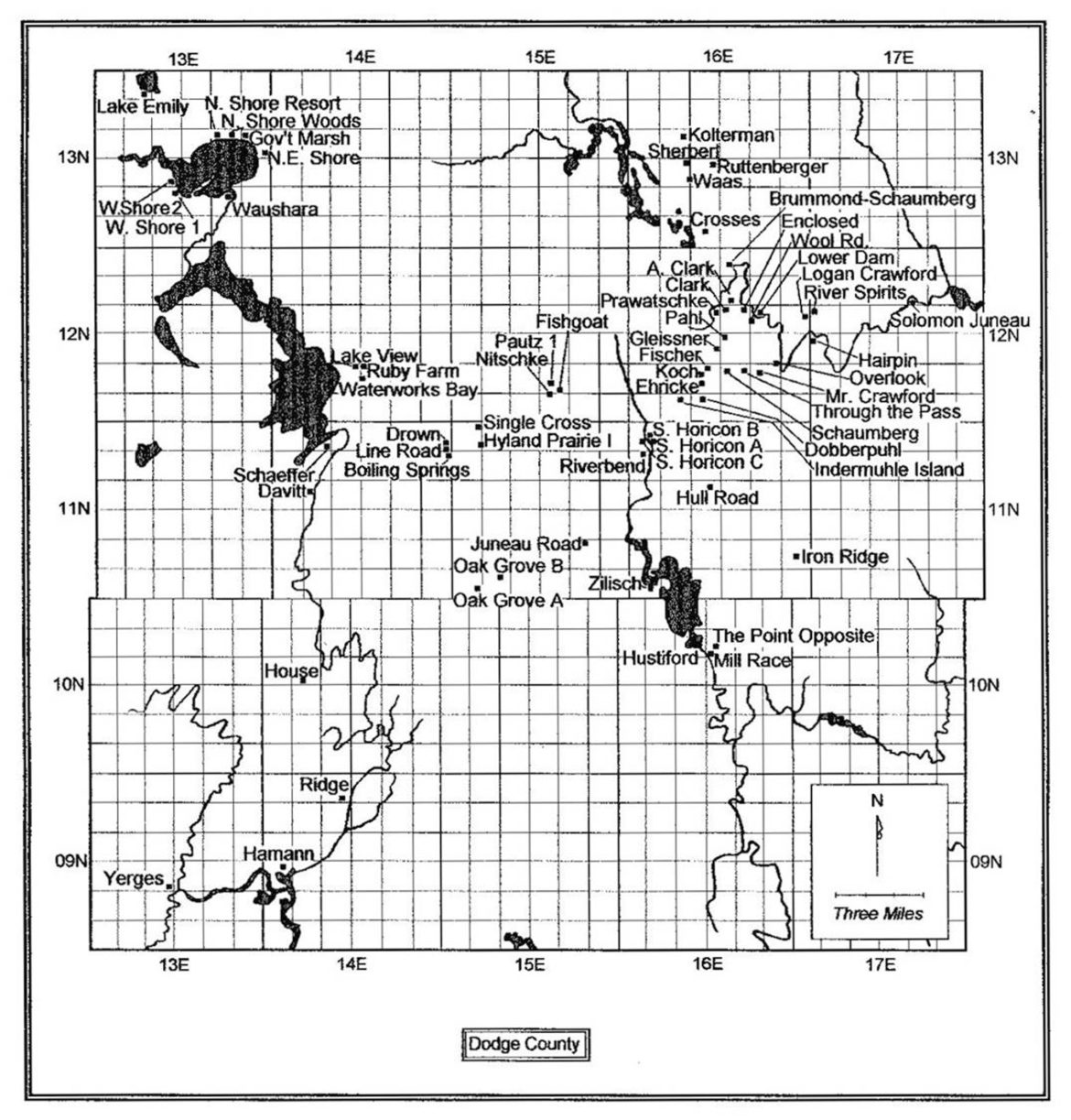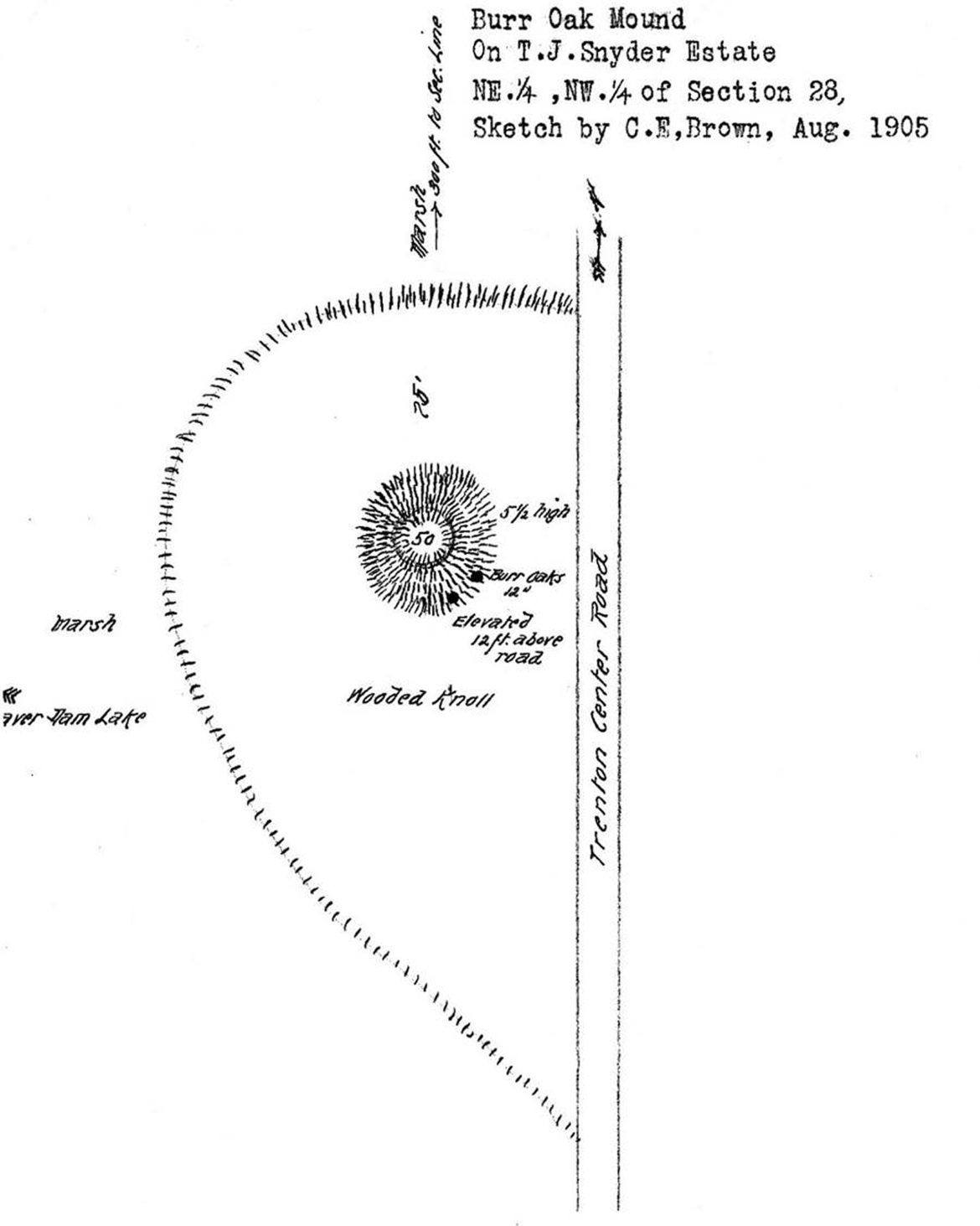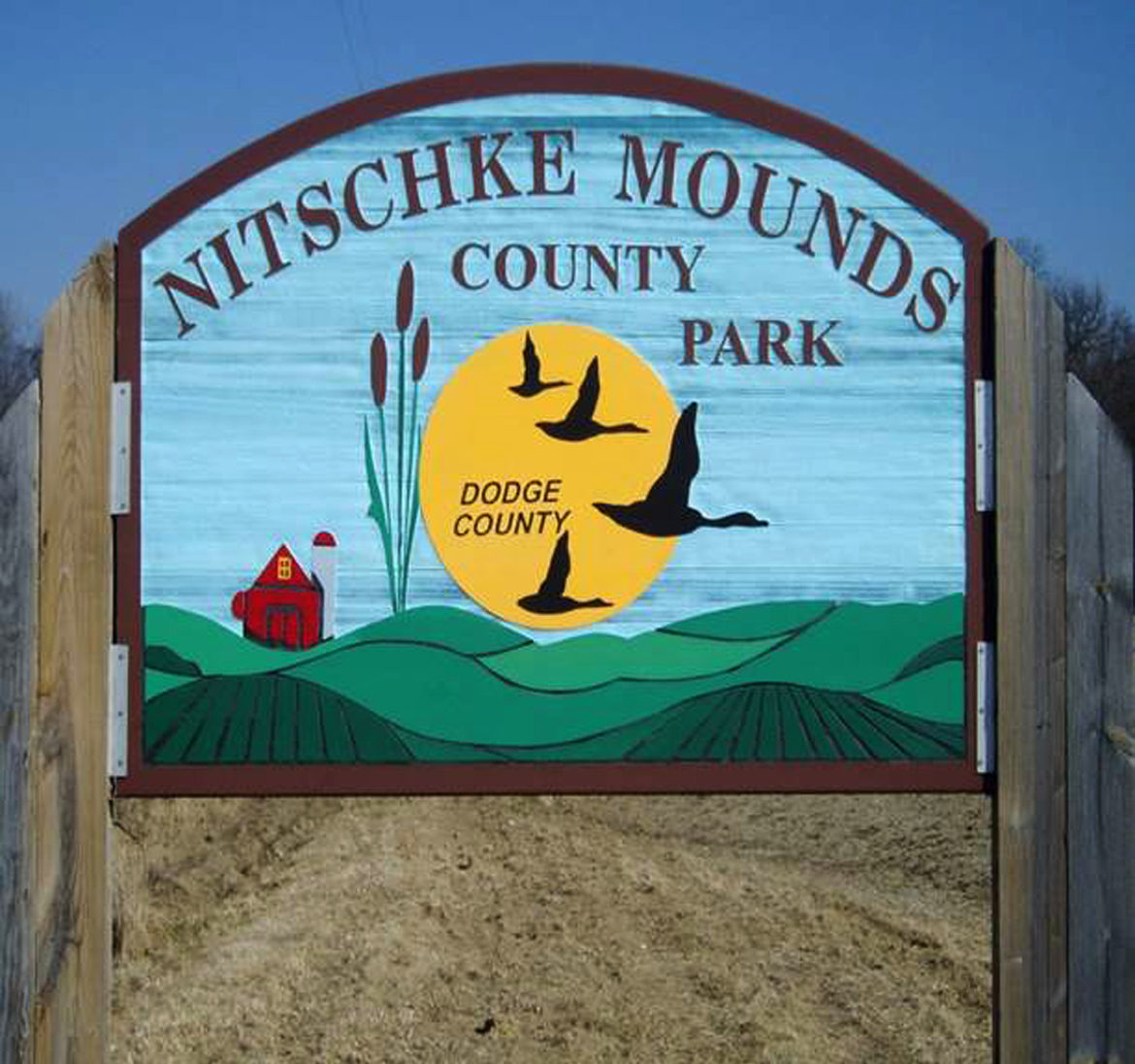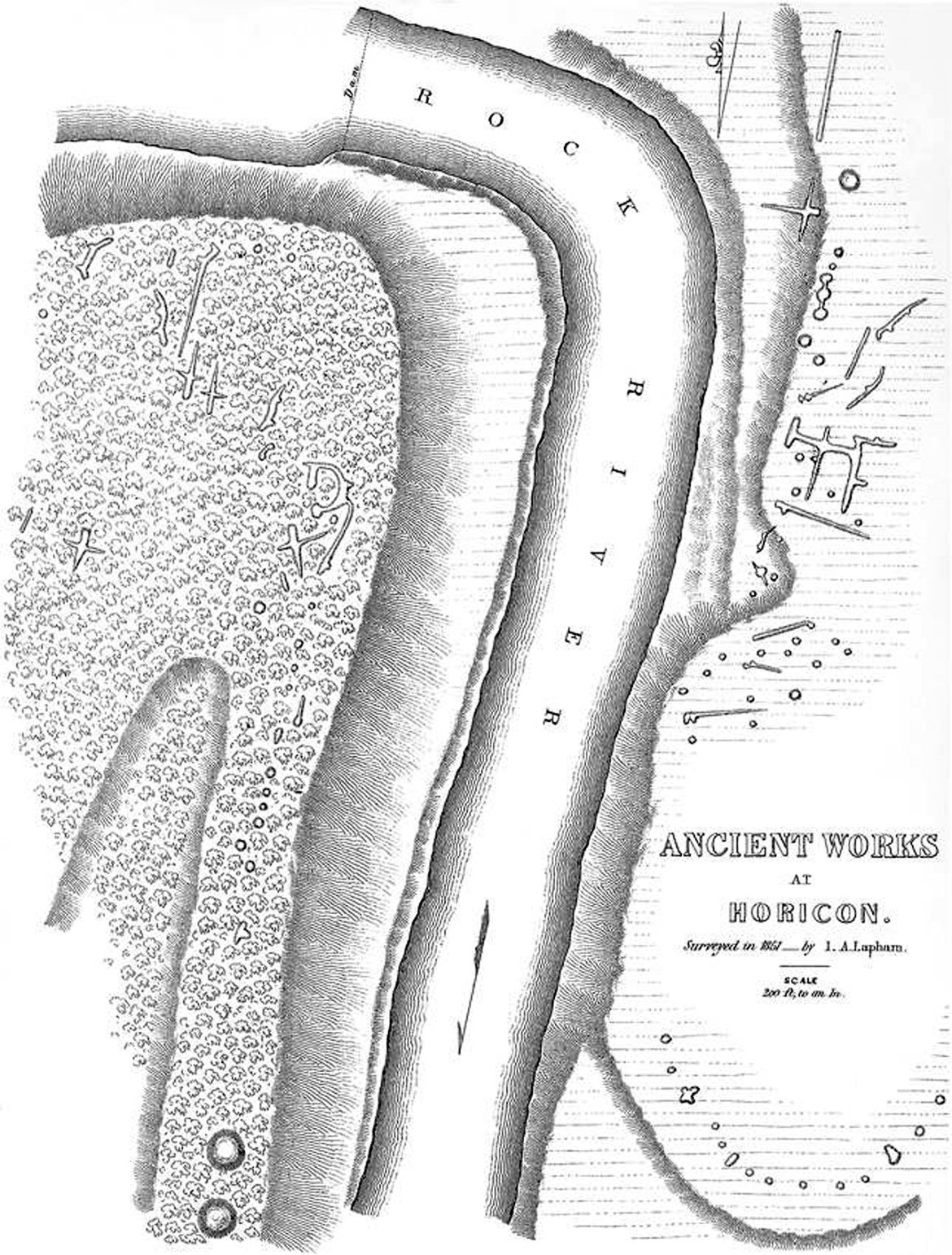Author: Lloyd Clark
(Author’s Preface: It will come as no surprise to frequent readers of this magazine that this author has a deep and abiding love for history. As a true son of Oklahoma, Native American blood runs through my veins, and I have studied with great interest the history of my ancestors, the Cherokee, and the other “Five Civilized Tribes” that were relocated to my home state. Unfortunately, due to the relocation that took place in the early 1800s, the “physical” history of the tribes is nearly non-existent there. That is why the discovery of the ample and extensive pre-Columbian jewels that dot the landscape of Southern Wisconsin has been such a surprise and pleasure.
As residents of Beaver Dam and Dodge County, we find ourselves truly blessed by the innate natural beauty of our land and the rich abundance that it provides. Well before the first Europeans ever set eyes upon the rolling plain and thick oak forests of Dodge County, Native Americans called our land home (many still do!) and there are many places where our native past can still be explored, some only minutes from downtown Beaver Dam and some that were in downtown Beaver Dam.)
Many people in the United States assume to visit really ancient pre-historical sites, one has to board a plane and fly to Europe. Stonehenge in England, Newgrange in Ireland, and the uncountable number of man-made mounds, cairns, crannogs and hill forts that run from the Baltic Sea in the north to the Mediterranean Sea in the south draw tens of millions of visitors each year. Humans have a depthless interest in their past and stand in wonder in front of 50-ton stones that were shaped without metal tools and moved and erected without the use of the wheel or any type of machinery. However, literally under our feet are millennia-old remnants of pre-historical “building projects” that the budding “Indiana Jones” can visit to experience just a hint of the wonder that was the world of our ancestors – the world of the Effigy Mound Builders.
According to the Wisconsin Historical Society website, “Between 700 BC and AD 0, pottery, domesticated plants, and the practice of building earthen burial mounds were introduced to Wisconsin. These changes marked the beginning of the Woodland Tradition (500 BC to ca. AD 1300). Still, patterns of living remained relatively stable until the beginning of the Late Woodland stage, between AD 600 and AD 900. Two important innovations – the bow and arrow and corn horticulture – swept across the region.
Within a span of only a couple centuries, a new and distinctive culture that archaeologists call ‘Effigy Mound’ arose in Wisconsin. The culture is named for the distinctive burial mounds constructed by communities across the southern two-thirds of Wisconsin. Some effigies are recognizable as birds, animals such as bear or deer, spirit animals, or people. Other mounds are abstract, including long linear embankments or combinations of embankments with the dome-shaped mounds favored by earlier peoples.”
What the mounds meant to their creators is a subject of intense debate among scholars and archeologists. According to the Wisconsin Historical Society: “Some archaeologists and Native Americans also believe that the effigy mounds symbolized spirits of the sky, earth, and water. According to this premise each mound group was a picture of the Late Woodland universe, sculpted out of earth. In the period after European contact, many of the same animals were associated with important clans, or groups of related families. These clans may have existed a thousand years ago. By building the mounds together, the social and religious ties binding the mobile and sometimes scattered communities would have been reinforced.”
In the History of Dodge County, M. Schaefer related an interview he did in 1848 with Wiscopawis, a Winnebago Chief that lived near to Beaver Dam. According to Wiscopawis, his father told him a story when he was a small boy about the creation of the effigy mounds. Wiscopawis stated, “Many years ago the various tribes of Indians inhabiting these parts professed to very religious and exhibited sincerity of those professions by holding tribal meetings and worshipping in their own manner, a deity fashioned by their own hands. Each one of those faithful who attended these gatherings brought with him a bag made of the skin of animals, filled with some portion of earth comprising their camping grounds.
“Sometimes they came from long distances carrying heavy loads of dirt on their backs and frequently they gathered by thousands to participate in the peculiar exercises. A part of the ceremony consisted in shaping this pile of dirt into the form of an animal.” While the validity of Wiscopawis’ story is unknown, we do know that more than 1000 groups of mounds once proudly stood across the Southern Wisconsin landscape, approximately 20,000 individual mounds.
What happened? We did. While there was a call as early as the mid-1800s to preserve the mounds, they stood in areas of lush grasslands, in sprawling timber spans, and in proximity to prominent lakes and rivers. In short, they stood in the way of progress. The agriculture and timber industries that fueled not only our early economy but also our economy of today needed the land the mounds stood upon. In the struggle between history and progress, progress always wins.
Fortunately, around 3200 effigy mounds still exist. Even better, discoveries of new mounds take place nearly every year keeping archeologists, both professional and amateur, enthralled and busy rediscovering our ancestor’s world. With summer officially here, this is a great time for anyone with a curiosity about our state, interest in history, or someone who just wants to see what a thousand-year-old man-made structure looks like to get out and visit these mounds unique to our area.
To visit still-existing mounds, one has only to travel about 10 minutes east of Beaver Dam on Highway E. Just past the Highway 26 intersection on the north side of the road, you will find Nitschke Mounds Park with interpretive signs on the one-mile trail around the mounds through the park. The Dodge County website has a full page dedicated to the park with the following description: “The property contains about 39 preserved animal effigy, conical and linear mounds believed to have been constructed around 800AD – 1100AD. The mounds represent one of the best surviving examples of the Mound Builders culture that once occupied the Dodge County area.” Historians believe that there might at one time have been as many as 100 mounds in the group. Many conical mounds found in our area are actually burial mounds of the people that lived here and the mounds in the park are no exception.
For Beaver Dam residents, there is a conical mound very much closer to home than the ones in Nitschke Park. In the January 1922 edition of The Wisconsin Archeologist, our friend M. Schaefer is credited in discovering the “Schaefer Effigy” of a lizard or panther on the “top of a knoll near the present site of the Polish Catholic church.” (This is currently the Chapel of the Archangels on Madison Street.) Schaefer described the mound, “In the center, or about midway between the hind and fore legs, was a thrifty (sic) oak tree, measuring eighteen inches in diameter and supposed to be at least one hundred years old.”
From this point a number of different stories cross paths with the most prevalent being that a chief of one of the local tribes was buried in the mound. According to the legend, the chief was unable to pay a “life debt,” a sum of silver to the family of a person that he had slain and offered himself up for execution. Another version of the legend states that it was not a chief, but a drunk Winnebago tribesman who killed a small boy in the Potawatomi camp that was on the west side of Beaver Dam Lake and that he was actually buried in “the Indian cemetery,” which was near to the mound. Wiscopawis, Mr. Schaefer’s friend and valuable informant, is reported to have been buried in the same cemetery; however, this seemed to be a prime “hunting” spot for enthusiastic supporters of the medical college in Madison, as Wiscopawis and a number of others buried there were disinterred and taken to Madison for study.
The article in the Wisconsin Archeologist continues, “Quite a group of mounds of various shapes dotted the ridge running north and south through the city of Beaver Dam, when Judge Hosmer came to the place in 1846. But these have long disappeared and the elegant residences of J.J. Willing, S.P.K. Lewis, Dr. Swan, and others have taken their place. These earthworks were on Park Avenue, between Vita Avenue and Division (Lincoln) Street. There are reported to have been about a dozen mounds on the ridge.”
Knowing, as we do, about the sacred nature of the spring in Vita Park, it only makes sense that religious constructions of this type would be in close proximity.
At one time, our fair city had dozens of effigy mounds within, and near to, its city limits. In the area of Edgewater Park, once the location of the T.J. Snyder Estate, a group of nine mounds could be found. The group, termed the “Lake View Farm Group” by early archeologists, consisted of five conical mounds, a linear mound and a Turtle effigy. The Turtle effigy spanned 36 x 60 feet and set a bit apart from the others, about 30 rods (495 feet) from the nearest conical mound called Mound #2, which itself stood three feet high and was 30 feet in diameter. Lucky for us, Mr. Snyder’s son Will was a natural archeologist, scientist and collector, who not only meticulously documented the mounds on the farm and around Beaver Dam, but also collected a great amount of Native American artifacts from the farm and nearby Skunk Island. These artifacts are on display at the Dodge County Historical Museum on the mezzanine level.
Another impressive group of mounds existed nearby called the Ruby Farm Group, as they were located on the property of the Ruby stock farm. The farm, approximately 225 acres that bordered the northern city limits at the time, was the pride and joy of owner Aaron Baker. Mr. Baker, a lifelong Beaver Dam resident, had received both national and international attention with his registered Devon cattle. According to the Historical and Genealogical Record of Wisconsin in 1894, “He (Baker) is the most extensive breeder of this stock in Wisconsin, if not in the Northwest…He exhibited fourteen head of Devon cattle at the World’s Columbian Exposition in 1893, where he was for about three months, and carried off several premiums.” Will Snyder documented the 13 mounds, consisting of 10 conical and 3 effigy mounds as was reported in the Wisconsin Archeologist: “The most northerly mounds of the group were situated in a tract of woodland and the others in a pasture. Several other conical mounds formerly located south of the most southerly of the line of conicals had been destroyed, according to Mr. Baker, in the cultivation of the land. Others were destroyed in the field west of the effigy mounds. The bear (?) effigy at the northern end of the group was 120 feet in length and 30 feet in width at the middle of its body. The turtle effigy was 164 feet long, the length of its body being 44 and of its long, tapering tail 120 feet. It measured 54 feet across the front and 33 across the rear limbs. The body of the panther type effigy was 108 feet long, and 12 feet in width at its middle. Of its tail, which was formerly 90 or more feet in length, about two thirds had been destroyed in the cultivated field into which it extended. These mounds were from 3 to 3 ½ feet high at their highest points. Of the ten conical mounds four were 30 feet in diameter and the other six 20, 24, 25,33, 36 and 40 feet in diameter. They were from less than 2 to 3 feet in height. The body of the turtle mound had recently been excavated. Near its base, a number of burned human bones, charcoal, and burned earth were found. Scattered human bones, the remains of bone re-burials, were found in two of the conical mounds lying between the turtle and the panther effigy. This mound group was located about 200 rods (.625 miles) east of the shore of Beaver Dam Lake and 60 rods (990 feet) east of the Lake View group.”
According to Mound experts, the following mound groups no longer exist in Beaver Dam: Beaver Dam Mound Group, Beaver Dam Junction Mound, Burr Oak Mound,
Lake View Farm Mound Group, Linc Road Mounds, Ruby Farm Mound Group and Schaefer Effigy. While we can lament the passing of these 1000-year-old monuments, we can also be happy in the knowledge that many thousands still remain in Wisconsin.
Area residents may have an interest in spending the day, weekend, or even an extended vacation visiting and experiencing these legacies that our ancestors have passed down to us. While the Nitschke Mounds are very close to Beaver Dam, for those wishing to travel a bit further our state offers an ample selection of pre-Columbian mound parks to visit. Any would-be “Indiana Jones” should first make a stop at the Dodge County Historical Museum on the corner of Park Avenue and Spring Street where Kurt Sampson, the museum’s curator and professional archeologist, can provide extensive information on the local mounds, their history and the most current theories on their construction. While there, you will also have the opportunity to visit the exhibition of finds by Mr. Snyder. The artifacts provide an untarnished view into the pre-history of Beaver Dam and its residents who have called our area home for thousands of years.
Whether you travel near or afar to touch a piece of our ancient history, tread lightly in order to ensure that the residents of Wisconsin 1000 years from now will still have places ancient and mystical to spur their wonder.
For more information on Wisconsin’s Effigy Mounds please visit: https://www.wisconsinmounds.com.
Additional information can also be found at:
https://www.wisconsinhistory.org/turningpoints/tp-004/
https://www.cityofmadison.com/planning/landmark/NativeAmMounds.pdf
https://dnr.wi.gov/topic/parks/rules/mounds.html
https://www.devilslakewisconsin.com/information-center/learning/effigy-mounds/
https://www.clli.org/section.asp?linkid=196&locid=49
